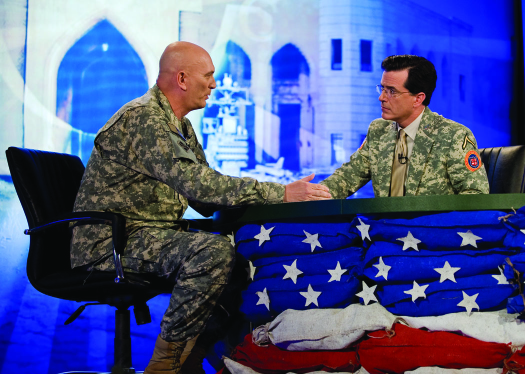| << Chapter < Page | Chapter >> Page > |
Another shift in the new media is a change in viewers’ preferred programming. Younger viewers, especially members of generation X and millennials, like their newscasts to be humorous. The popularity of
The Daily Show and
The Colbert Report demonstrate that news, even political news, can win young viewers if delivered well.

Viewers who watch or listen to programs like John Oliver’s
Last Week Tonight are more likely to be aware and observant of political events and foreign policy crises than they would otherwise be.
Local government and politics need visibility. College students need a voice. Why not become a citizen journalist? City and county governments hold meetings on a regular basis and students rarely attend. Yet issues relevant to students are often discussed at these meetings, like increases in street parking fines, zoning for off-campus housing, and tax incentives for new businesses that employ part-time student labor. Attend some meetings, ask questions, and write about the experience on your Facebook page. Create a blog to organize your reports or use Storify to curate a social media debate. If you prefer videography, create a YouTube channel to document your reports on current events, or Tweet your live video using Periscope or Meerkat.
Not interested in government? Other areas of governance that affect students are the university or college’s Board of Regents meetings. These cover topics like tuition increases, class cuts, and changes to student conduct policies. If your state requires state institutions to open their meetings to the public, consider attending. You might be the one to notify your peers of changes that affect them.
What local meetings could you cover? What issues are important to you and your peers?
Newspapers were vital during the Revolutionary War. Later, in the party press era, party loyalty governed coverage. At the turn of the twentieth century, investigative journalism and muckraking appeared, and newspapers began presenting more professional, unbiased information. The modern print media have fought to stay relevant and cost-efficient, moving online to do so.
Most families had radios by the 1930s, making it an effective way for politicians, especially presidents, to reach out to citizens. While the increased use of television decreased the popularity of radio, talk radio still provides political information. Modern presidents also use television to rally people in times of crisis, although social media and the Internet now offer a more direct way for them to communicate. While serious newscasts still exist, younger viewers prefer soft news as a way to become informed.

Notification Switch
Would you like to follow the 'American government' conversation and receive update notifications?